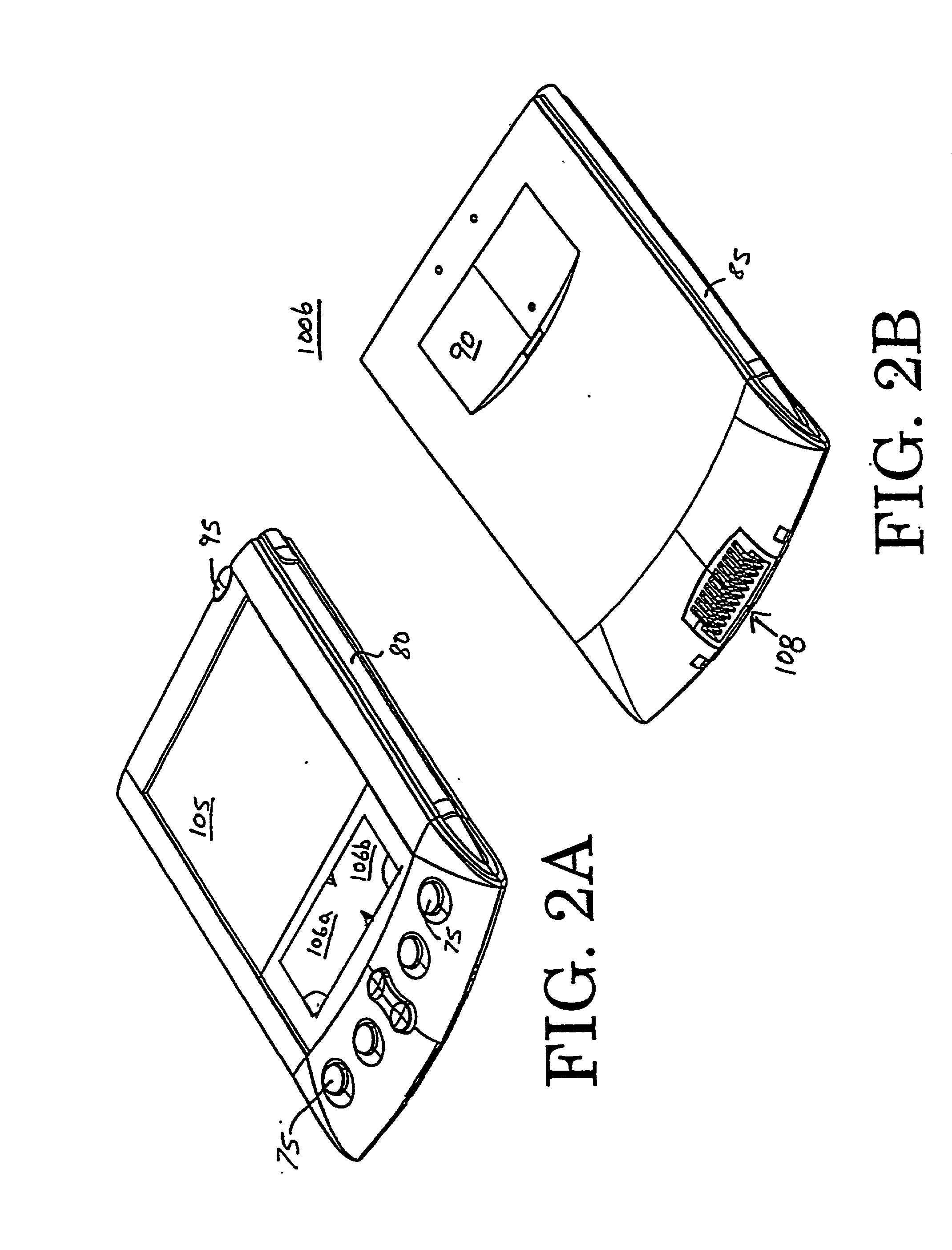Method and system for latency-independent peripheral device identification
a peripheral device and latency-dependent technology, applied in the field of peripheral device identification and interrupt management, can solve the problems of affecting the ease of use and the battery life of pdas and other hand-held computers, affecting the efficiency of infrared (ir) synchronization process, and affecting the efficiency of full-sized keyboard input devices, etc., to achieve the effect of eliminating the latency dependency of prior art device identification schemes, reducing the time required in the development cycle, and superi
- Summary
- Abstract
- Description
- Claims
- Application Information
AI Technical Summary
Benefits of technology
Problems solved by technology
Method used
Image
Examples
Embodiment Construction
[0033] Referring now to FIG. 1, a system 50 that can be used in conjunction with the present invention is shown. It is appreciated that the method and system for latency-independent peripheral device identification of the present invention can be used in conjunction with any computer system and that system 50 is illustrative rather than limiting. It is further appreciated that the portable computer system 100 described below is only exemplary. System 50 comprises a host computer system 56 which can either be a desktop unit as shown, or, alternatively, can be a laptop computer system 58. Optionally, one or more host computer systems can be used within system 50. Host computer systems 58 and 56 are shown connected to a communication bus 54, which in one embodiment can be a serial communication bus, but could be of any of a number of well known designs, e.g., a parallel bus, Ethernet, Local Area Network (LAN), etc. Optionally, bus 54 can provide communication with the Internet 52 using...
PUM
 Login to View More
Login to View More Abstract
Description
Claims
Application Information
 Login to View More
Login to View More - R&D
- Intellectual Property
- Life Sciences
- Materials
- Tech Scout
- Unparalleled Data Quality
- Higher Quality Content
- 60% Fewer Hallucinations
Browse by: Latest US Patents, China's latest patents, Technical Efficacy Thesaurus, Application Domain, Technology Topic, Popular Technical Reports.
© 2025 PatSnap. All rights reserved.Legal|Privacy policy|Modern Slavery Act Transparency Statement|Sitemap|About US| Contact US: help@patsnap.com



